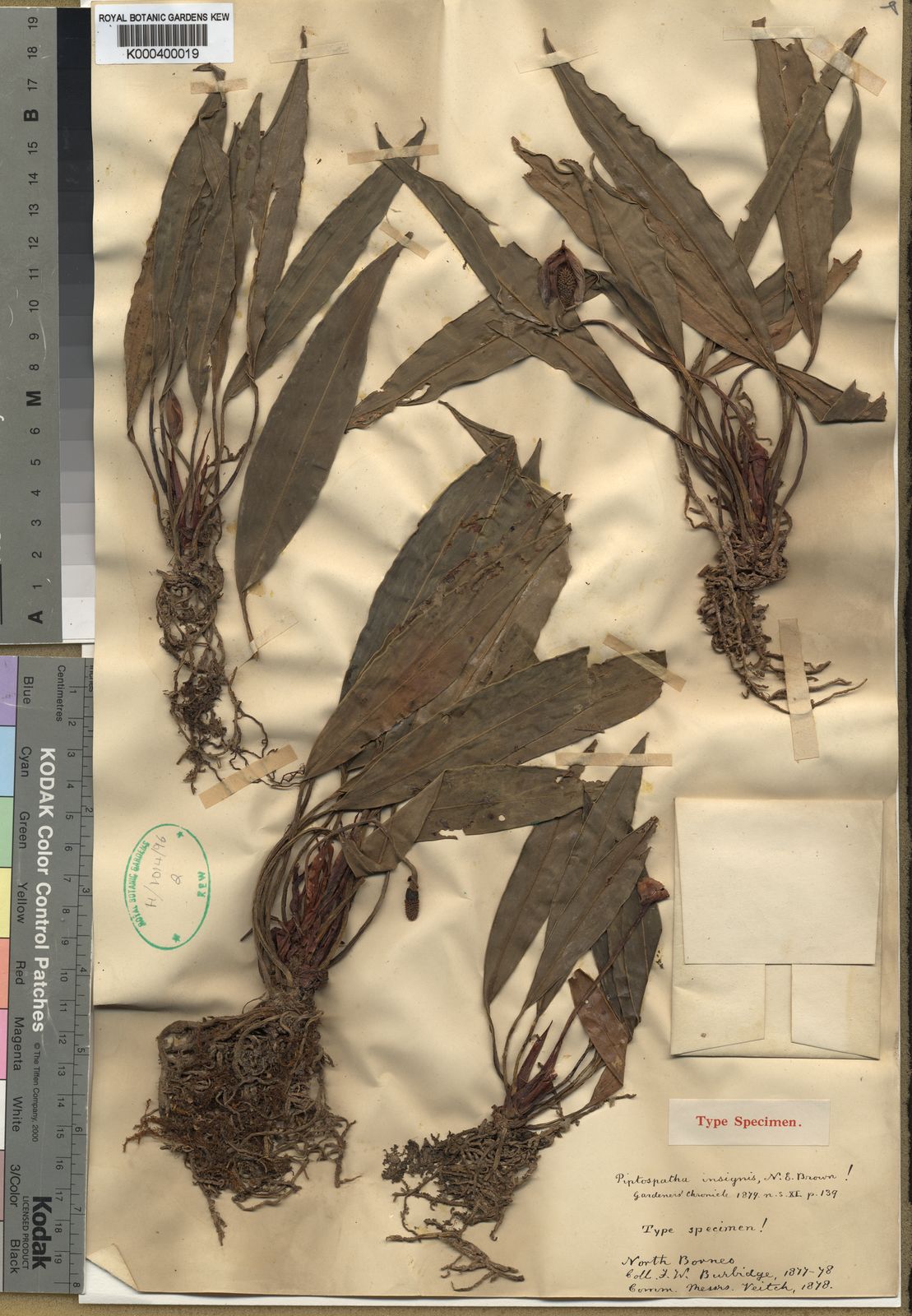CATE Araceae, 17 Dec 2011. araceae.e-monocot.org
-
Distribution
-
Bogner & Hay (2000) suggest Sabah, based on the "North Borneo" locality given by Burbidge on the herbarium material. However, this does not accord well with Burbidge’s known itinerary, or with the arrival dates of the plants at Veitch’s from where Kew received the plants used by Brown to publish the name P. insignis. On balance, it seems most likely that P. insignis was collected during the same trip that Burbidge gathered P. burbidgei - Bukit Sagan, Limbang, on the borders of modern Sarawak and Brunei (Boyce & Wong, 2011).
Malesia: endemic to Borneo (Sabah); known only from a cultivated plant from which the type and subsequent material was preserved, all without specific provenance indicated.
-
Ecology
-
Rheophytic on sandstones. Burbidge (1880: 342) states "Of the new genera discovered two have very pretty spathes, and if they can be successfully cultivated will prove very interesting and ornamental stove plants. Piptospatha insignis N.E.Br., a pretty little "rock arad, (sic)" found on sandstone boulders in the beds of mountain streams, has a tuft of lance-shaped leaves and dainty white spathes tipped with pink."; altitude: unknown.
-
General Description
-
Small herb c. 12 cm tall. Stem condensed, c. 1 cm diam. Leaves several; petiole shorter than the blade, 3-5 cm long, sheathing at the extreme base, the wings extended into a ligular portion to 5 cm long drying dark brown; blade very narrowly lanceolate to very narrowly elliptic 9-14 cm long × 0.8-1.8 cm wide, coriaceous, dark green adaxially, paler abaxially, the base cuneate-decurrent, asymmetric, the tip acuminate and apiculate for 2-3 mm, the margin slightly revolute; midrib abaxially and adaxially prominent, with 3 fine primary lateral veins on each side diverging at c. 25° running to a marginal vein; secondary venation adaxially obscure, abaxially very faint; tertiary venation obscure. Inflorescence solitary (to 2-3 together, but interspersed with foliage leaves); peduncle exceeding the petioles, 6-9 cm long, reddish. Spathe at first erect, then horizontal, then nodding at anthesis, white suffused pink, the apex entirely pink, slightly upturned, apiculate for 2 mm. Spadix 1.5 cm long, subcylindric, shortly stipitate with the stipe adnate to the spathe; female zone 5 mm long, 4 mm diam.; pistils ovoid, c. 0.8 mm diam., weakly 4-5-angular; stigma sessile, discoid, weakly angular, as wide as the ovary; interpistillar staminodes absent among the pistils, several along the adaxial side of the stipe, a few at the base of the female zone on the abaxial side, stipitate, clavate, slightly taller than the pistils, the tops c. 0.6 mm diam.; sterile interstice absent; male zone subcylindric, obtuse, slightly wider than female zone, c. 8 mm long; stamens free, crowded, not obviously grouped, c. 0.6 mm across, with the connective elevated into a pointed projection c. 1 mm long; thecae truncate, opening through single apical slit-like pores. Fruit unknown, the lower spathe persisting level with the top of the female zone.
-
Habitat
-
Unknown; probably rheophytic.

